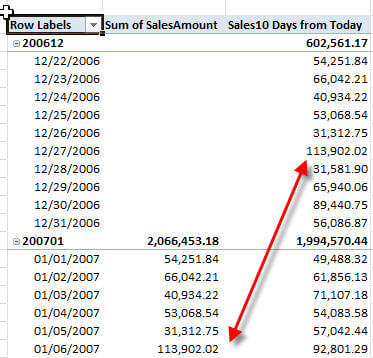

As rightly suggested by reeza, it is better use the intnx function incase you wish to increase the date to a particular period. In this section, you can find information about the date and time scalar functions that Amazon Redshift supports. Many relational databases and data warehouse appliances such as Snowflake, SQL Server, Netezza, Oracle, etc support date add function to add or subtract days, months, years, hours, minutes, and seconds to date or timestamp value. For example, consider below dateadd function in Snowflake. dateadd function is not loaded in the proc sql. try the below code, where a particulat date is increased by 12 days. For example, the dateadd () is one of the functions provided by Redshift. proc sql select ,intnx ('day',date,12) as incdate formatdate9. TODATE - Amazon Redshift AWSDocumentationAmazon RedshiftDatabase Developer Guide SyntaxArgumentsReturn typeExamples TODATE TODATE converts a date represented by a character string to a DATE data type.Basically, the dateadd () function is used to return the new date-time values by adding the required date and timestamp, or we can say the specified date and timestamp as per user requirement. Date and time functions in transactions There are four forms of IF statements available in Redshift supported plpgsql: IF-THEN. Syntax TODATE(string, format) TODATE(string, format, isstrict) Arguments string A string to be converted.

(See the valid date parts in the table below) value is an integer number to be added to the datepart of the inputdate. Every plpgsql IF statement should have the corresponding END IF statements. The DATEADD () function accepts three arguments: datepart is the part of date to which the DATEADD () function will add the value. Leap seconds are not considered in elapsed-time calculations.ĭate parts for date or timestamp functions.In case there is nested IF then there should be two END IF, one for main IF and other one for nested IF. When you run the following functions within a transaction block (BEGIN … END), the function returns the start date or time of the current transaction, not the start of the current statement. I have a date conversion function in Redshift like this and trying to write a similar. The following functions always return the start date or time of the current statement, even when they are within a transaction block. redshiftdimtime.sql This file contains bidirectional Unicode text that may be interpreted or compiled differently than what appears below. Redshift Extract Function Usage and Examples. Redshift: Select converttimezone(Australia/Sydney,dateadd(us. Question: How can I take a start timestamp (createdat) and end timestamp (endedat) and add a column that adds 1 month to the start timestamp until the end timestamp. Also have a dates table with all calendar dates that can be utilized. To review, open the file in an editor that reveals hidden Unicode characters. Redshift - Adding dates (month interval) between two dates Ask Question 0 Using Amazon Redshift. Redshift extract function extracts the sub field represented by units from the date/time value, interval, or duration specified for column. This function is equivalent to Redshift datepart () function. The extract function is very useful when you are working with different heterogeneous data sources. The following date functions are deprecated because they run only on the leader node. Let’s take some examples of using the DATEADD() function.For more information, see Leader node–only functions. The function DATEADD() function returns a new date value after adding the value to the date_part. The following table lists the valid values of date_part: date_part

input_date is a literal date value or an expression which can resolve to a value of type DATE, DATETIME, DATETIMEOFFSET, DATETIME2, SMALLATETIME, or TIME.It will not round the number in this case. If the value evaluates to a decimal or float, the function DATEADD() will truncate the decimal fraction part. value is an integer number to be added to the date_part of the input_date.(See the valid date parts in the table below) date_part is the part of date to which the DATEADD() function will add the value. condition is : (current month - 36) so i have written like DATEADD (month, -36, getdate ()) but it is giving the date like 00:00:00 but I need the output like 00:00:00.The DATEADD() function accepts three arguments: DATEADD (date_part, value, input_date )Ĭode language: SQL (Structured Query Language) ( sql )


 0 kommentar(er)
0 kommentar(er)
